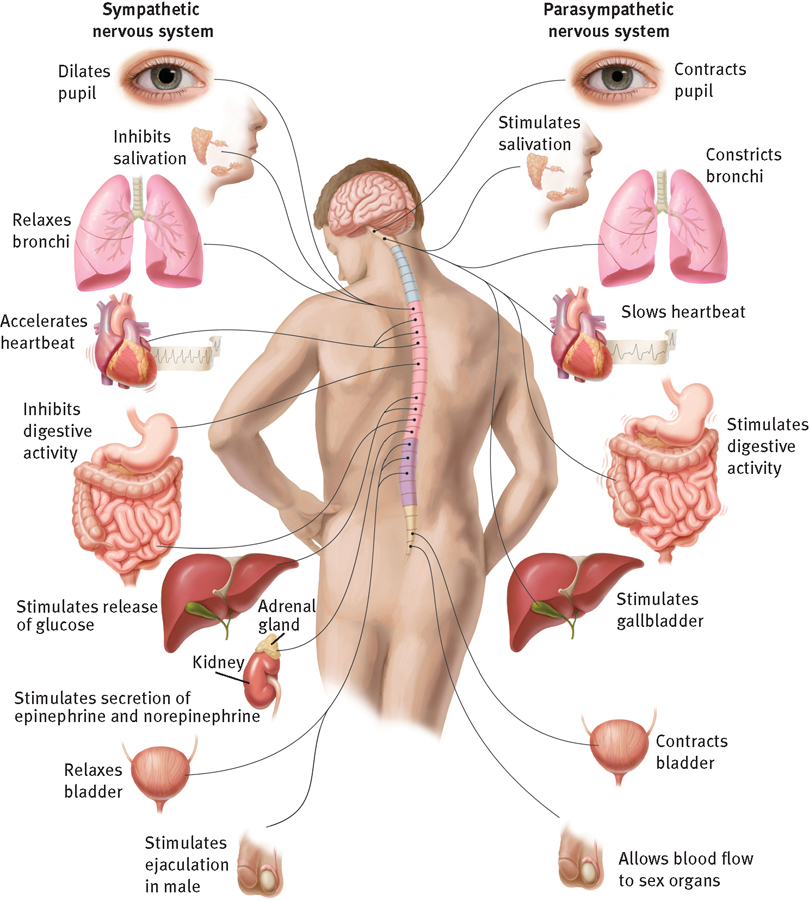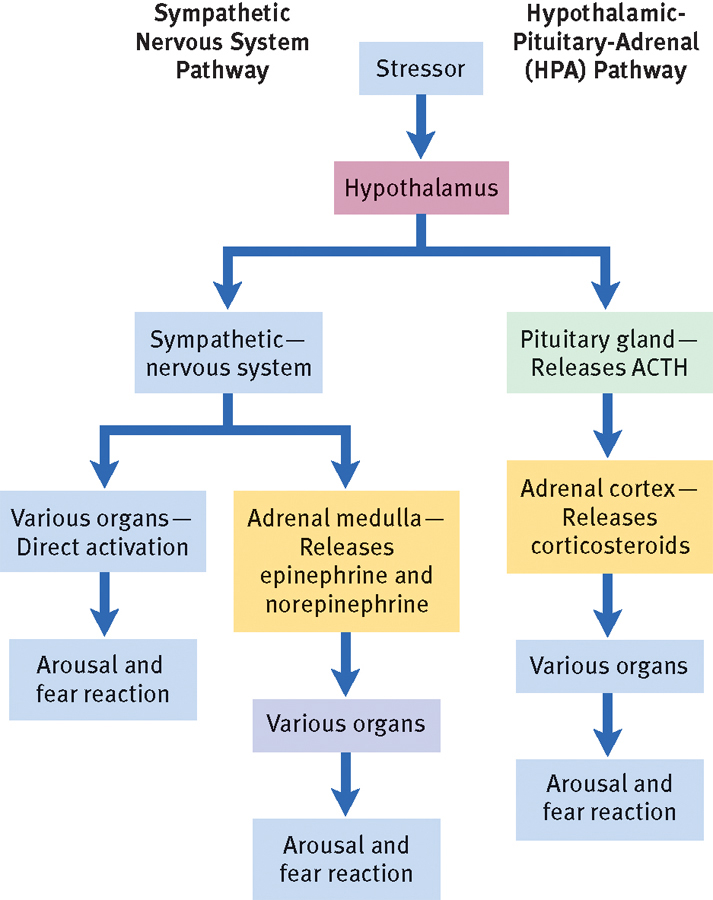6.1 Stress and Arousal: The Fight-or-Flight Response
The features of arousal and fear are set in motion by the brain area called the hypothalamus. When our brain interprets a situation as dangerous, neurotransmitters in the hypothalamus are released, triggering the firing of neurons throughout the brain and the release of chemicals throughout the body. Actually, the hypothalamus activates two important systems—
 autonomic nervous system (ANS) The network of nerve fibers that connect the central nervous system to all the other organs of the body.
autonomic nervous system (ANS) The network of nerve fibers that connect the central nervous system to all the other organs of the body.
 endocrine system The system of glands located throughout the body that help control important activities such as growth and sexual activity.
endocrine system The system of glands located throughout the body that help control important activities such as growth and sexual activity.

The autonomic nervous system (ANS)
When the sympathetic division of the ANS is activated, it stimulates some organs and inhibits others. The result is a state of general arousal. In contrast, activation of the parasympathetic division leads to an overall calming effect.
When we face a dangerous situation, the hypothalamus first excites the sympathetic nervous system, a group of ANS fibers that work to quicken our heartbeat and produce the other changes that we experience as fear or anxiety. These nerves may stimulate the organs of the body directly—
 sympathetic nervous system The nerve fibers of the autonomic nervous system that quicken the heartbeat and produce other changes experienced as arousal and fear.
sympathetic nervous system The nerve fibers of the autonomic nervous system that quicken the heartbeat and produce other changes experienced as arousal and fear.
When the perceived danger passes, a second group of autonomic nervous system fibers, called the parasympathetic nervous system, helps return our heartbeat and other body processes to normal. Together the sympathetic and parasympathetic nervous systems help control our arousal and fear reactions.
 parasympathetic nervous system The nerve fibers of the autonomic nervous system that help return bodily processes to normal.
parasympathetic nervous system The nerve fibers of the autonomic nervous system that help return bodily processes to normal.
The second pathway by which arousal and fear reactions are produced is the hypothalamic-
 hypothalamic-
hypothalamic-
 corticosteroids A group of hormones, including cortisol, released by the adrenal glands at times of stress.
corticosteroids A group of hormones, including cortisol, released by the adrenal glands at times of stress.

The endocrine system: The HPA pathway
When a person perceives a stressor, the hypothalamus activates the pituitary gland to secrete the adrenocorticotropic hormone, or ACTH, which stimulates the adrenal cortex. The adrenal cortex releases stress hormones called corticosteroids that act on other body organs to trigger arousal and fear reactions.
The reactions on display in these two pathways are collectively referred to as the fight-

Pathways of arousal and fear
When we are confronted by a stressor, our bodies produce arousal and fear reactions through two pathways. In one, the hypothalamus sends a message to the sympathetic nervous system, which then activates key body organs, either directly or by causing the adrenal medulla to release epinephrine and norepinephrine into the bloodstream. In the other pathway, the hypothalamus sends a message to the pituitary gland, which then signals the adrenal cortex to release corticosteroids—
People also differ in their sense of which situations are threatening (Moore et al., 2014; Merz & Roesch, 2011). Walking through a forest may be fearsome for one person but relaxing for another. Flying in an airplane may arouse terror in some people and boredom in others. Such variations are called differences in situation, or state, anxiety.